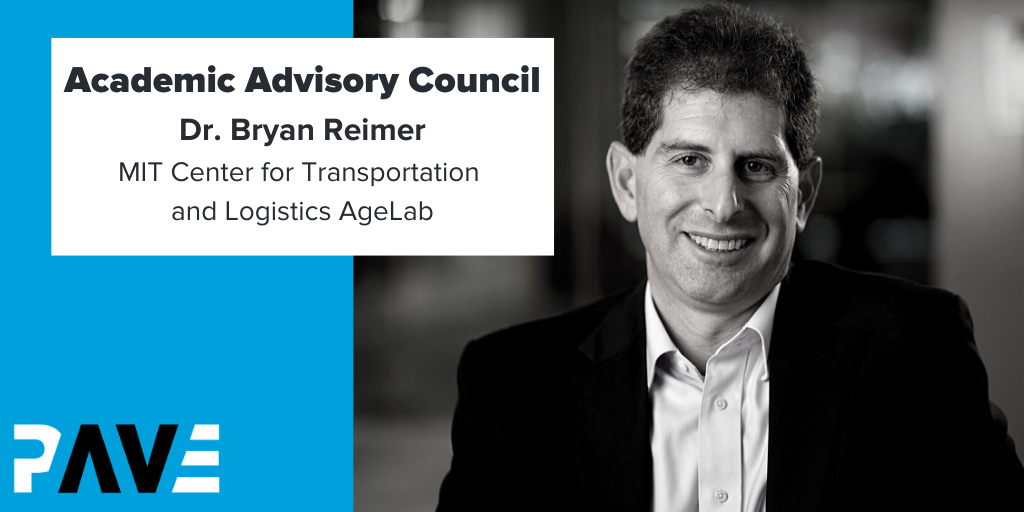About
Bryan Reimer, Ph.D., is a Research Scientist in the MIT Center for Transportation and Logistics AgeLab. Bryan’s work aims to find solutions to the next generation of human factors challenges associated with driver attention management, distraction, automation and the use of advanced driver assistance systems to maximize mobility and safety. He founded and leads the Advanced Vehicle Technology (AVT) consortium, an academic industry partnership seeking to understand how drivers use emerging, commercially available vehicle technologies including collaborative automation.
Forbes contributor page: https://www.forbes.com/sites/bryanreimer/#2be0f2db3107
PAVE: What are current barriers you see in public acceptance of automated vehicles?
Our evolution towards a highly automated mobility system will require overcoming a barrier in consumer trust in the systems that will define how we live and move in the years to come. Trust in highly automated vehicles needs to be built today by enhancing consumer understanding of advanced driver assistance systems and collaborative driving features.
PAVE: How does your work align with the mission of PAVE to educate the public on AV technology and its promise?
One of the core tenants of the Advanced Vehicle Technology (AVT) consortium is to better understand how drivers leverage commercially available vehicle technologies through naturalistic, objective data collection in instrumented vehicles that is supplemented via questionnaire and interview data. Our research has developed new insight around consumer understanding of automated vehicles and will aid in assessing changes that result from education and increased public awareness.

